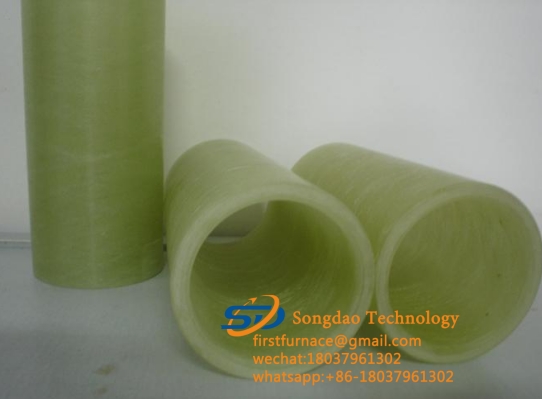- 08
- Feb
Технология на производство и разработка и приложение на тръби от фибростъкло
Технология на производство и разработка и приложение на тръби от фибростъкло
Има три основни типа тръба от стъклени влакна production processes: reciprocating filament winding process, continuous filament winding process and centrifugal casting process.
Процес на навиване на възвратно-постъпателни нишки (принадлежащ към метода с фиксирана дължина): При този процес резервоарът за потапяне се връща обратно с въртящия се дорник, а дългите стъклени влакна се поставят под определен наклонен ъгъл спрямо оста на дорника и спомагателният ъгъл (т.е. ъгълът на навиване) се контролира от съотношението на скоростта на движение на резервоара за потапяне към скоростта на въртене на дорника, а транслационното движение на резервоара за потапяне се контролира от компютъризирано електромеханично управление. Броят на навиващите слоеве се увеличава постепенно до достигане на проектираната дебелина на стената. След завършване на навиването, смолата в изделието е значително втвърдена. След втвърдяване, дорникът се отстранява от тръбата от фибростъкло.
Continuous filament winding process (belonging to continuous method): The process is that the tube passes through a feeding station that supplies resin pre-impregnated roving, chopped glass fiber reinforced plastic fiber and resin sand mixture in motion, and the tube is continuously advancing in the core mold. made in.
Centrifugal casting process (belonging to the fixed-length method): In this process, the cut glass fiber reinforced material and sand are fed into a steel mold fixed on the bearing, and the unsaturated resin with catalyst is injected into one end of the steel mold to make the steel mold. It impregnates the reinforcing material. Under the action of centrifugal force, the resin replaces the air in the fibers and fillers, thereby producing a dense composite material without pores. Due to the action of centrifugal force, the inner wall of the tube forms a smooth and clean resin-rich inner surface layer. Cures at higher temperatures. The pipe made by this method is also called glass fiber reinforced plastic sand pipe.

